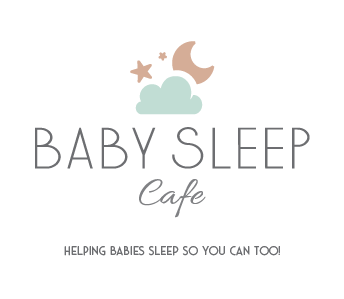When it comes to sleep training, there are four basic methods that parents have scoured the internet for looking for the right one for their family. Baby Sleep Cafe uses two of these methods for sleep training which have proven to work if the parents are ready and if the baby is ready. Yep, that’s right, the parents have to be ready too. Understanding these techniques and how they differ can make the journey smoother for both parents and babies. Here, we’ll explore four popular sleep training methods: Cry It Out (CIO), Pick Up/Put Down, Leave and Check or Stay in the Room.
1. CRY IT OUT(CIO)
LET’ S BE CLEAR…I DON’T USE THIS METHOD!
This method doesn’t align with my philosophy of checking in on your baby during sleep training. For that reason, I won’t focus on this method, but I wanted to briefly explain what it entails.
Overview: Cry It Out, or, the “extinction method,” involves allowing a baby to cry for a specified period without parental intervention until they learn to self-soothe and fall asleep independently. The parent puts the baby down in the crib and will not return until the morning. Does this method work? Yes, for some families I’m sure that it does, but it is not something that I teach. Most parents who reach out to me are not looking for that quick fix and are often very attached to their baby. They WANT to sleep train but they want a gentler approach.
2. PICK UP/PUT DOWN
This gentle method involves picking up the baby to soothe them whenever they cry and then putting them back in the crib awake.
How It Works:
Place the baby in the crib while they are still awake.
When the baby cries, pick them up to comfort them.
Once the baby is calm, put them back in the crib while still awake.
Repeat as necessary until the baby falls asleep.
Pros:
Provides immediate comfort to the baby.
Gentle approach suitable for younger babies.
Cons:
Can be tiring for parents due to frequent picking up and putting down.
May take longer for the baby to learn to sleep independently.
Best For:
Parents looking for a gentle method with lots of interaction.
Younger babies who need more reassurance.
This is the method that I use to help parents with babies younger than four months. Often, babies are not ready or capable of sleep training until four months (some naturally sleep through the night by this age and few can sleep train before four months). I like to use this method with younger babies because it allows the parents more interaction with their child and being more present for their baby. I call this “practice sleep training.” I have parents do this until the baby falls asleep, the baby is starting to become frustrated or the parents are done.
3. LEAVE & CHECK
This is the method that I use the most with my clients. The majority of the families I work with reach out to me when their baby is between 4 months to a year. This is the method I use for this age. I often modify this based on what the parents can handle regarding the amount of time between checks.
Overview: Also known as the Ferber Method, this technique involves letting the baby cry for a predetermined amount of time before briefly checking on the baby.
How It Works:
Place the baby in their crib while they are still awake.
Leave the room and allow the baby to cry for a set interval (e.g., 5 minutes).
Return briefly to comfort the baby without picking them up.
Gradually increase the intervals between checks or continue with checks every 5 minutes.
Pros:
Provides some reassurance to the baby while still promoting self-soothing.
Structured approach with a clear plan.
Cons:
Still involves periods of crying, which can be tough for parents to endure.
Requires consistency and patience.
Best For:
Parents who want to balance between not intervening too much and providing some comfort.
Babies who respond well to intermittent comfort.
I use this method because parents are comforted knowing they can go in to check on their baby after a set amount of time. I realize that sleep training is an emotional event for parents. If they have the confidence to know that they will be able to go to their baby after a certain amount of time, they are less stressed.
4. STAY IN THE ROOM
This is the method I use for older babies and toddlers
Overview: Also known as the “chair method” or “camping out,” this method involves parents gradually removing their presence from the baby’s room.
How It Works:
Sit near the crib without interacting too much with the baby.
Gradually move further away from the crib each night.
Eventually, move out of the room completely once the baby can fall asleep independently.
Pros:
Gradual process can be less stressful for both baby and parents.
Parents can offer comfort with their presence.
Cons:
Can take longer than other methods.
Requires a lot of patience and consistency.
Best For:
Parents who prefer a gradual approach.
Babies who need the reassurance of a parent’s presence.
Choosing the Right Method for Your Family
Each sleep training method has its own advantages and challenges. The right approach depends on your baby’s temperament, your parenting style, and your family’s unique needs. It’s important to remain consistent with whichever method you choose and to give it time to work. Consulting with a pediatrician and myself can also provide valuable guidance tailored to your baby’s needs.
Sleep training can be a challenging journey, but with patience and consistency, TOGETHER, we can help your baby develop healthy sleep habits that benefit the entire family.
If you have questions about any of these methods or you are deciding whether sleep training is right for your family please contact me so we can discuss the possibilities.


